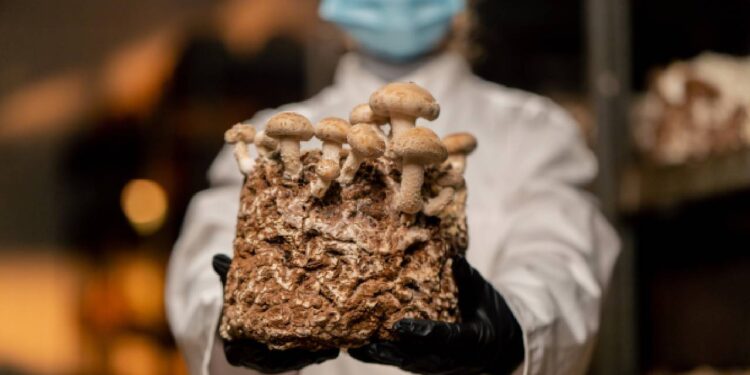Mushrooms are a fascinating group of organisms that occupy a unique niche in the natural world. From their essential role in decomposing organic matter to their diverse and sometimes bizarre appearances, mushrooms have captivated human interest for centuries. Among the myriad of interesting facts about fungi, some species have evolved truly extraordinary traits that set them apart from the rest. In this article, we’ll explore the world of glowing mushrooms and other weird and wonderful facts about fungi, with a particular focus on the growing trend of Psilocybin Mushroom Chocolate Bar.
The Magic of Bioluminescent Mushrooms
One of the most enchanting phenomena in the fungal kingdom is bioluminescence—the ability of certain mushrooms to produce light. These glowing mushrooms are a rare and mesmerizing sight, often found in the deep, dark corners of forests. Bioluminescence in fungi is caused by a chemical reaction involving a pigment called luciferin, an enzyme called luciferase, and oxygen. When these components interact, they produce light, creating an eerie, greenish glow.
Notable Bioluminescent Species
There are over 70 species of bioluminescent mushrooms, with some of the most famous being:
- Mycena chlorophos: Found in Japan, Brazil, and Southeast Asia, this mushroom emits a soft green light and typically grows on decaying wood in humid environments.
- Omphalotus olearius: Commonly known as the Jack-o’-lantern mushroom, this species is found in North America and Europe. It glows in the dark and is often mistaken for edible mushrooms, though it is toxic if consumed.
- Panellus stipticus: This mushroom is found in North America, Europe, and Asia. It grows on decaying wood and emits a faint greenish glow, particularly in dark, damp conditions.
The exact purpose of bioluminescence in mushrooms is still a topic of debate among scientists. Some theories suggest that the glow may attract insects that help disperse the mushroom’s spores, while others believe it might deter nocturnal animals from eating them. Regardless of the reason, the sight of these glowing fungi is nothing short of magical.
The Bizarre World of Fungal Symbiosis
Mushrooms are not just solitary organisms; many of them engage in complex relationships with other plants and animals. One of the most intriguing examples of this is mycorrhizal fungi, which form symbiotic relationships with the roots of plants. In this partnership, the fungus provides the plant with essential nutrients, such as phosphorus and nitrogen, while the plant supplies the fungus with carbohydrates produced through photosynthesis.
The Wood Wide Web
This underground network of mycorrhizal fungi is sometimes referred to as the “Wood Wide Web.” Through this network, plants can communicate with each other, sharing resources and even sending distress signals in response to threats such as insect infestations. This complex interaction highlights the essential role that fungi play in maintaining the health and stability of ecosystems.
Mushrooms That Can Control Minds
While glowing mushrooms and symbiotic fungi are fascinating, some species have taken their bizarre adaptations to another level. Enter the world of parasitic fungi, where certain mushrooms have evolved the ability to control the behavior of their hosts.
The Zombie-Ant Fungus
One of the most famous examples is the Ophiocordyceps fungus, often referred to as the “zombie-ant fungus.” This parasitic fungus infects ants and takes over their central nervous system. Once infected, the ant is compelled to leave its colony, climb to a high point, and attach itself to a leaf or twig. The fungus then kills the ant and produces a fruiting body that releases spores, ready to infect the next unsuspecting victim.
This mind-control ability may sound like something out of a horror movie, but it’s a real-life example of how fungi can manipulate their hosts to ensure their own survival.
Psilocybin Mushrooms: Nature’s Psychedelic Gift
Another fascinating group of fungi are psilocybin mushrooms, often referred to as “magic mushrooms.” These mushrooms contain the psychoactive compound psilocybin, which has been used for centuries in various cultures for spiritual and medicinal purposes. Psilocybin mushrooms are currently experiencing a resurgence in popularity, both as a tool for personal growth and as a subject of scientific research.
The Modern Trend: Psilocybin Mushroom Chocolate Bar
In the modern world, one of the most popular ways to consume psilocybin is through the Psilocybin Mushroom Chocolate Bar. These bars combine the psychoactive effects of psilocybin with the delicious taste of chocolate, making them a more palatable and convenient option for those interested in experiencing the benefits of magic mushrooms.
The Psilocybin Mushroom Chocolate Bar has become increasingly popular due to its ease of use and precise dosing capabilities. For individuals who are new to psilocybin, these bars offer a controlled and manageable way to explore the potential benefits of the substance, such as enhanced creativity, improved mood, and deeper introspective experiences.
Moreover, the combination of psilocybin with chocolate is not just a matter of taste; chocolate itself contains compounds that can enhance the effects of psilocybin, creating a more enjoyable and profound experience. As research into psilocybin continues to grow, these chocolate bars are likely to remain a popular and innovative way to engage with this powerful compound.
Mushrooms That Can Break Down Plastic
In an age where plastic pollution is a growing concern, certain fungi offer a glimmer of hope. Researchers have discovered mushroom species capable of breaking down plastic, potentially offering a sustainable solution to one of the world’s most pressing environmental problems.
The Plastic-Eating Fungus
One such species is Pestalotiopsis microspora, a fungus found in the Amazon rainforest. This remarkable mushroom can break down polyurethane, a common component of many plastics, even in anaerobic conditions. The discovery of plastic-eating fungi has opened up new avenues for research into bioremediation, the use of organisms to detoxify and restore polluted environments.
These fungi could play a crucial role in managing plastic waste in the future, demonstrating once again how fungi can surprise us with their unique and beneficial properties.
Conclusion
Mushrooms are much more than just food or medicine—they are a window into some of the most mysterious and fascinating aspects of nature. From glowing mushrooms that light up the forest floor to the mind-controlling abilities of parasitic fungi, the world of mushrooms is full of surprises.
As interest in mushrooms continues to grow, whether for their ecological roles, their psychedelic properties in the form of Psilocybin Mushroom Chocolate Bars, or their potential to solve environmental challenges, these incredible organisms will undoubtedly continue to captivate and inspire us. The more we learn about fungi, the more we realize just how integral they are to the balance of life on Earth.























